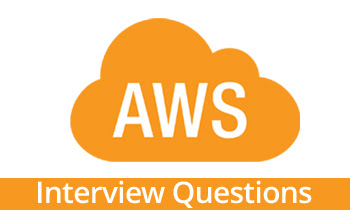Day 49 : INTERVIEW QUESTIONS ON AWS
 Sahil Kaushal
Sahil KaushalTable of contents

INTERVIEW QUESTIONS:
Name 5 AWS services you have used and their use cases:
EC2 (Elastic Compute Cloud): Used for scalable computing capacity. Example: Hosting web applications and running batch processing jobs.
S3 (Simple Storage Service): Used for object storage. Example: Storing backups and static website hosting.
RDS (Relational Database Service): Managed relational database service. Example: Hosting MySQL databases for web applications.
Lambda: Serverless compute service. Example: Running event-driven functions for real-time data processing.
CloudWatch: Monitoring and observability service. Example: Collecting and tracking metrics, logs, and events.
What are the tools used to send logs to the cloud environment?
CloudWatch Logs: For collecting and monitoring log files.
Fluentd: Open-source data collector for unified logging.
Logstash: Server-side data processing pipeline.
Filebeat: Lightweight shipper for forwarding and centralizing log data.
Kinesis Firehose: For real-time streaming data to AWS services.
What are IAM Roles? How do you create/manage them?
IAM Roles: Provide temporary security credentials for AWS services. They are used to grant permissions to entities you trust.
Creation/Management: Use the IAM console, CLI, or SDK to create roles, define policies, and assign them to AWS resources.
How to upgrade or downgrade a system with zero downtime?
Blue-Green Deployment: Deploy the new version alongside the old one, switch traffic using a load balancer.
Rolling Updates: Gradually replace instances with the new version.
Canary Releases: Release to a small subset of users before full deployment.
What is infrastructure as code and how do you use it?
Infrastructure as Code (IaC): Managing and provisioning computing infrastructure through machine-readable scripts.
Usage: Tools like Terraform or AWS CloudFormation to define and deploy infrastructure.
What is a load balancer? Give scenarios of each kind of balancer based on your experience.
Load Balancer: Distributes incoming application traffic across multiple targets.
Scenarios:
Application Load Balancer (ALB): For HTTP/HTTPS traffic, used in microservices architectures.
Network Load Balancer (NLB): For TCP/UDP traffic, used for high-performance applications.
Classic Load Balancer (CLB): For applications built within the EC2-Classic network.
What is CloudFormation and why is it used for?
CloudFormation: AWS service for modeling and setting up AWS resources using templates.
Usage: Automates the provisioning and updating of infrastructure in a safe and repeatable manner.
Difference between AWS CloudFormation and AWS Elastic Beanstalk?
CloudFormation: Infrastructure as code service for defining and provisioning AWS resources.
Elastic Beanstalk: Platform as a service for deploying and managing applications without worrying about the underlying infrastructure.
What are the kinds of security attacks that can occur on the cloud? And how can we minimize them?
Attacks:
DDoS Attacks: Use AWS Shield and WAF.
Data Breaches: Use encryption and IAM policies.
Man-in-the-Middle Attacks: Use SSL/TLS for data transmission.
Minimization: Implement security best practices, regular audits, and monitoring.
Can we recover the EC2 instance when we have lost the key?
- Yes: Use EC2 Instance Connect or Systems Manager Session Manager if previously configured. Alternatively, create an AMI of the instance and launch a new instance.
What is a gateway?
- Gateway: Acts as a bridge between different networks. Examples include API Gateway, which manages APIs, and Storage Gateway, which connects on-premises software appliances with cloud-based storage.
What is the difference between Amazon RDS, DynamoDB, and Redshift?
RDS: Managed relational database service for SQL databases.
DynamoDB: Managed NoSQL database service for key-value and document data.
Redshift: Managed data warehouse service for large-scale data analytics.
Do you prefer to host a website on S3? What’s the reason if your answer is either yes or no?
- Yes: S3 is cost-effective, highly available, and scalable for static websites. It integrates well with CloudFront for content delivery and Route 53 for DNS management.
Thank you for reading😉.
Subscribe to my newsletter
Read articles from Sahil Kaushal directly inside your inbox. Subscribe to the newsletter, and don't miss out.
Written by
